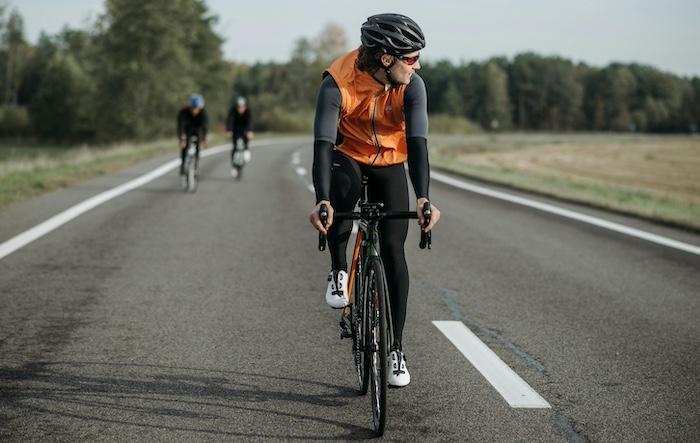
Biking is a popular form of aerobic exercise and is often a favored form of exercise by people with low back pain conditions. Biking may be a good exercise option for many reasons:
- Biking is less jarring to the spine than many other forms of aerobic exercise, such as jogging or aerobics class. Stationary bicycling is particularly gentle on the spine, and the variety of spinning classes now available can provide a vigorous aerobic workout with minimal stress to the lower back.
- Some people with certain back conditions often feel more comfortable in the forward-leaning position of sitting on a bicycle seat and leaning forward on the handlebars. Lumbar spinal stenosis is an example of a condition in which most people feel better in a forward-leaning position.
- For those with a low back condition in which a reclining position feels better, a reclining bike, also called a recumbent bike, may be preferable. Lumbar degenerative disc disease is an example of a condition in which many people feel better in a reclining position.
How Biking Can Cause Back Pain or Neck Pain
- Little conditioning is provided to the back muscles by bicycling
- Back posture on the bicycle can strain the lower back, a result of the lumbar spine flexing or pulling up)
- Position on the bicycle, with the neck arching back, can strain the neck and upper back, especially when the bicycle is equipped with aerodynamic bars
- Rough terrain increases jarring and compression to the spine, which can lead to back pain
How to Prevent Back Injuries or Neck Injuries from Biking
- Select the best bicycle for your purpose. For casual bike riders, a mountain bike with higher, straight handlebars (allowing more upright posture), and bigger tires (more shock absorption) may be a better option than a racing-style bicycle
- Adjust the bicycle properly to fit one's body. If possible, this is best achieved with the assistance of an experienced professional at a bicycle shop
- Use proper form when biking; distribute some weight to the arms and keep the chest up; shift positions periodically
- Periodically gently lifting and lowering the head to loosen the neck and avoid neck strain
- Discuss and review your pedaling technique with a personal trainer or other knowledgeable professional to get the most out of the exercise
- Use shock-absorbing bike accessories including seats and seat covers, handlebar covers, gloves, and shock absorbers on the front forks (front shocks or full suspension shocks depending on the type of riding you plan to do and the terrain)
Biking does not specifically strengthen the core body muscles - the abdominals and the back muscles - which various authorities feel are a critical component of preventing and alleviating lower back pain.
Therefore, it is also important to do some back-strengthening exercises, and core body exercises in conjunction with your bicycling routine to provide strength and conditioning for the back. There is a wide variety of these types of exercises.
Precision Pain Care and Rehabilitation has two convenient locations in Richmond Hill – Queens, and New Hyde Park – Long Island. Call the Queens office at (718) 215-1888 or (516) 419-4480 for the Long Island office to arrange an appointment with our Interventional Pain Management Specialists, Dr. Jeffrey Chacko or Dr. Sonny Ahluwalia.















